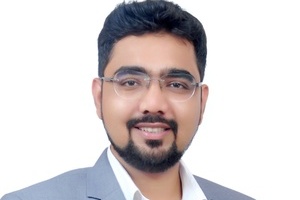One consequence of our rapidly changing world has been an explosion of seemingly endless essential systems and services.
To manage this, says Ashish Vishwasrao Nangare, solution consultant at Tecnotree, innovators and policy makers are increasingly looking at digital transformation for help, especially digital communities. These occur when groups and individuals connect to share goods and services via digital platforms, thus developing a shared economy.
The success of digital communities is visible across a variety of areas. Doctors can attend to their patients via video consultations and e-medical applications, while e-agricultural platforms are empowering farmers to reach consumers via digital marketplace. Online video conferencing and learning platforms have enabling businesses to function and students to learn during the COVID-19 epidemic. Even carpooling applications show what can be done when services are shared within a digitally connected community!
However, building successful digitally connected communities requires several elements: connectivity, smart sensors, cybersecurity, data management and analytics. These are the building blocks that help to manage the whole ecosystem and improve the end-user experience. Critically, there is no better industry better positioned to leverage them into one seamless experience than telecommunications. This is true for several reasons.

The changing role of CSPs to DSP enablers
Telecom companies are obviously the biggest supplier of connectivity in our digital first world. However, as technology has changed, they have evolved from being “providers” to a role best defined as “enablers”.
To succeed in this new environment, communication service providers (CSPs) have had to transform themselves into DSPs (digital service providers) with new service delivery and business models where they can offer and monetise areas like content services, digital marketplace, Internet of Things (IoT) based services, 5G, mobile banking and e-commerce services.
This new DSP business model is not based on generating revenue by providing services but by enabling the services over digital platforms and monetising a share of the digital world.
Moreover, it can also build community service models where DSPscan earn revenue on every transaction done using their network, irrespective of service provider. These transactions could be peer-to-peer (P2P), business-to-business (B2B), business-to-consumer (B2C) or business-to-business-to-consumer (B2B2C).
This can be a huge revenue source for DSPs. For example, SK Telecom, one of the largest telecom operators in South Korea, was an early entrant into digital services in 2011 when it launched an online marketplace. By the end of 2012, it earned more than US$1 billion (€0.85 billion) in revenue. Megatrends in Telecommunications has predicted that for some service providers, 20%–50% of revenues will come from non-traditional digital services.
Revenue sharing
Similarly, ventures between DSPs and government agencies can help build a partner ecosystem, such as application developers, community service providers, medical services, transportation networks etc.
Not only can DSPs provide end-users with an enhanced cellular experience in congested areas with costlier tariffs, they can create a digital platform where a subscriber can become a service provider and offer peer to peer services by sharing a percentage of the transaction with the DSP.
Working together, local government and DSPs can identify key community goals and work towards achieving them by using the DSP’s connectivity & digital platforms to enable and empower the local communities, whilst also earning revenue from it.
Revenue generation
Innovations in wireless and fixed-line technologies such as 4G, 5G, fibre connectivity, high-speed broadband mean that a huge range of revenue generating services will soon be a reality. 5G’s Ultra-Reliable Low-Latency Communication (URLLC) can enable CSPs to provide reliable (99.999%) and low-latency services (1ms), enabling advancements such as tactile Internet/AR assisted surgery, remote diagnosis and haptic feedback; as well as Transportation & Emergency Trajectory Alignment (ETrA) with driver assistance, autonomous driving, traffic management.
Globally, 1.57 billion people are expected to adopt 5G by 2025 or 18% of total mobile users. 5G will share 4G’s extensive coverage, available spectrum, and existing infrastructure, while 4G networks will leverage 5G technologies to provide better services. There will be revenue generation opportunities across both technologies, as a result.
Technology has significantly reshaped the way communities think and triggered the amalgamation of the digital & physical worlds to create an immersive one. The digitisation of platforms had made the access of goods and services on-demand part of modern society.
Digitally connected communities, powers by DSPs, are a catalyst to not only help make the world a better and more sustainable place to live but, with systematic planning and partnerships, further embed technology into the social fabric of communities to improve services and systems significantly. In their own way, DCCs can accelerate the innovation, increase the employability, trust and reliability amongst the community; whilst helping governments to understand the community needs, speed up the operations and service delivery.

The author is Ashish Vishwasrao Nangare, solution consultant at Tecnotree.
About the author
The author, Ashish Vishwasrao Nangare’s department is focused on enabling digital business models for communication service providers (CSPs) and he has published several research papers in various journals and national / international conferences.
Comment on this article below or via Twitter: @VanillaPlus OR @jcvplus






